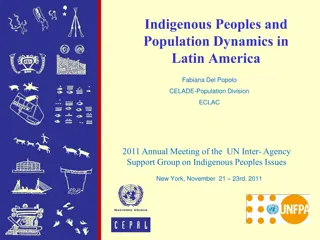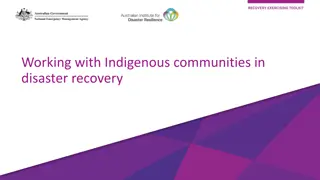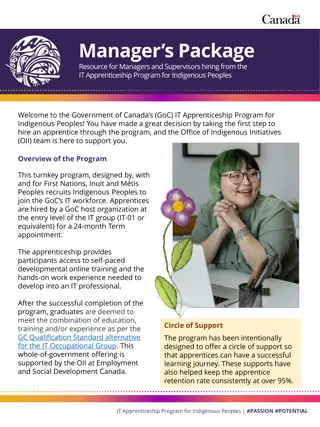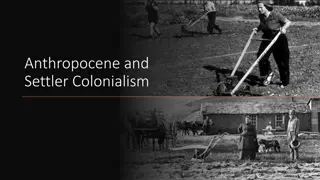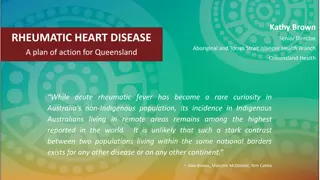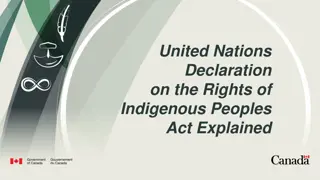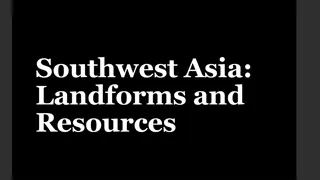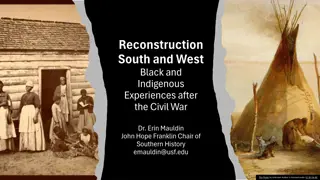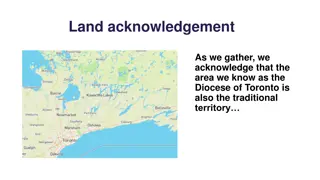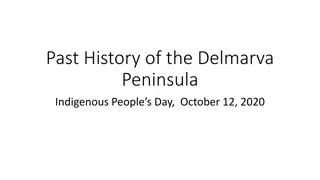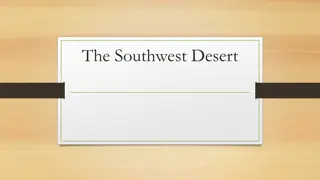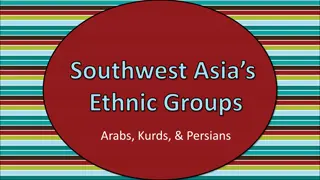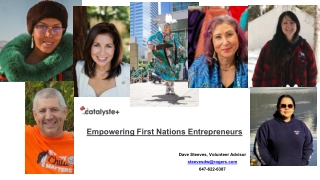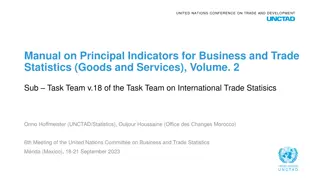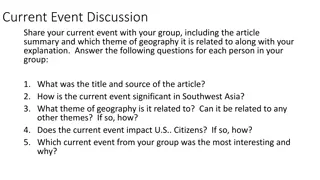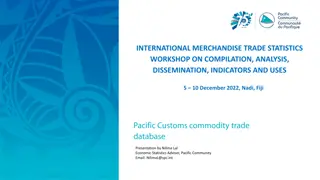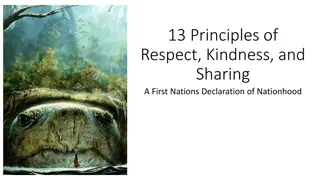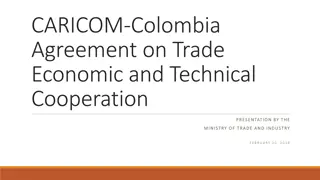Indigenous Peoples of the Southwest and West: Adapting to Environment and Trade Networks
Indigenous peoples of the Southwest and West, such as the Pueblo, Navajo, Shoshone, Nez Perce, and Chumash, adapted to their environments by building adobe homes, utilizing trade networks for resources, and honoring their beliefs through ceremonial practices. They thrived by growing staple foods, hunting, fishing, and engaging in trade within their regions.
Download Presentation

Please find below an Image/Link to download the presentation.
The content on the website is provided AS IS for your information and personal use only. It may not be sold, licensed, or shared on other websites without obtaining consent from the author. Download presentation by click this link. If you encounter any issues during the download, it is possible that the publisher has removed the file from their server.
E N D
Presentation Transcript
The Southwest and the West Chapter 2, Lesson 4
Lesson Objectives Describe how the Pueblo peoples adapted to their environment. Identify the ways of life of other peoples of the Southwest and West.
Vocabulary Adapt Staple Surplus Adobe Hogan Trade network
The Southwest The Native Americans who lived in the Southwest had to adapt, or adjust, their ways of life to the land. Two of these groups were the Hopi and Zuni. Most of the groups in this region became known as the Pueblo people, and they lived in pueblos built on mesas or on the sides of steep canyons. The Pueblo were able to grow their staple, or main, foods of corn, beans, and squash despite the dry climate. They found ways to collect water and to store surplus, or extra amounts, of food. The Navajo also lived in the Southwest region.
Pueblo Culture The desert environment shaped how both the Pueblo and the Navajo lived. Because there weren t many trees, these groups made houses from adobe, or sun-dried bricks made of clay and straw. The Navajo built homes called hogans, cone-shaped shelters were built by covering a wooden frame with mud or adobe. The Pueblo and Navajo depended on trade for resources they needed, and would trade pottery and baskets. Both the Pueblo and Navajo honored their gods in special ceremonies.
Groups to the West The Shoshone lived part of the year in the Great Basin hunting small animals, and spent the rest of the year hunting buffalo in the mountains of present-day Wyoming. The Nez Perce lived to the northwest on the Columbia Plateau and depended on rivers and streams for fishing. The Chumash lived in what is now southern California and depended on the Pacific Ocean as a food source. These groups formed trade networks, systems that allow people to get goods from far away places. However, they did not always travel far distances to trade.




